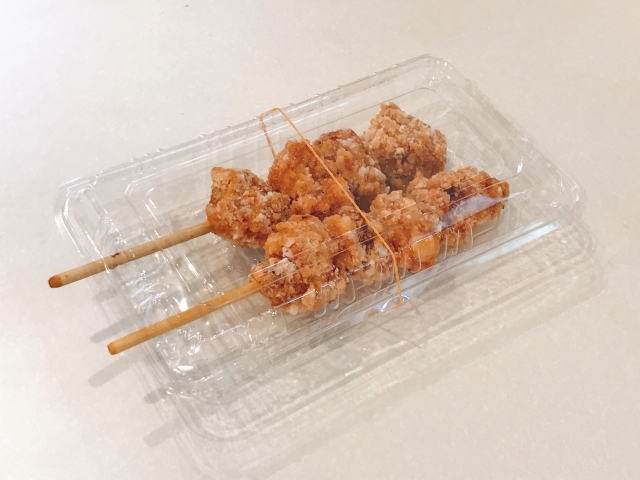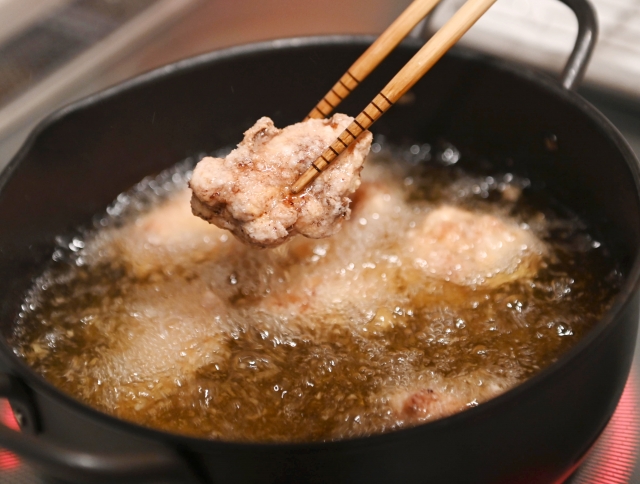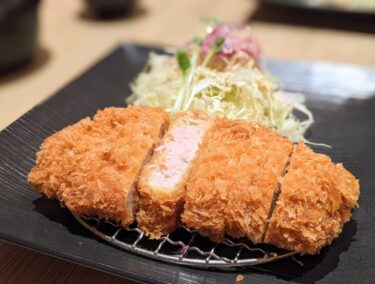Karaage is a dish in which the ingredients are lightly sprinkled with wheat flour or potato starch and fried in high-temperature oil.
Chicken is often used, but vegetables and fish are also used. In addition, the ingredients may or may not be seasoned in advance.
Karaage of chicken is a popular dish in Japan and is often eaten at a restaurant, as a bento, or at home. The menu that includes Karaage of chicken and rice is often served in popular restaurants.
What is Karaage and can I eat it?
Materials of Chicken Karaage
(Example of chicken karaage)
Chicken, soy sauce, starch, sugar, salt, spices, vegetable oil
| Low-gluten | Low FODMAPs | |||
| Restaurant | Food supermarket | Convenience store |
Various ingredients are used for Karaage
There are various types of karaage. First of all, I would like to introduce Karaage of chicken.
Karaage of chichen
Karaage of chicken is bite-sized chicken seasoned with soy sauce, sugar, salt, garlic, ginger, etc., sprinkled with flour or potato starch, and then fried in high-temperature oil. You can eat it as it is.
By the way, in Japan, “Karaage of chichen” and “fried chicken” are considered to be different dishes.
Fried chicken is a relatively large chunk of chicken sprinkled with flour containing salt, spices and herbs and fried in hot oil, and bone-in meat is also used as is.
In addition, fried chicken cannot be eaten in one bite, and includes inedible parts such as bones and skin.
As you can see, fried chicken and fried chicken differ in the part where the meat is used and the method of seasoning.
However, in case you use mixed powder for Karaage that is commercially available, the batter may have some flavor.
Karaage of other than chicken
Various ingredients are fried and eat as Karaage, and small shrimp and fish are popular as ingredients.
Small shrimp can be eaten together with their shells, and the most commonly used are shiba shrimp, sakura shrimp, and macrobrachium.

Fried small shrimp are often unflavored, so salt them before eating. In addition, various kinds of fish are fried, but the cooking method differs depending on the type of fish.
Small fish such as shishamo and smelt are fried as they are. On the other hand, Spanish mackerel and cod use only the body part. Sometimes, like flatfish and anglerfish, the fillet with bones is fried. In addition, it may or may not be seasoned in advance.

Try to eat Karaage!
How much ?
Karaage of chicken
- $ 7~10, for Karaage set menu (Karaage, raw vegetable, miso soup, and rice)
- $ 3~7, for Karaage bento (Karaage, raw vegetable, radish pickles, and rice)
- $ 2, for Karaage snack of convenience stores

Where can I eat Karaage?
Popular restaurants, food supermarkets and convenience stores.
Precautions when eating Karaage
For people who are gluten-free due to celiac disease, etc.
Do not eat as it uses flour. Some Karaage in frozen foods is gluten-free. Please see writer’s comment.
For people who are gluten-free except for celiac disease
Most karaage of chichen uses flour and soy sauce, but not in large quantities. If you are gluten-free for your health, don’t overeat.
For Muslims
Karaage does not contain any problematic ingredients, but be aware that some restaurants may cook it with pork.
Japanese writer’s comment for Karaake
Karaage is a popular menu in Japan for adults and children.
Therefore, Karaage of chichen is sold as a frozen food by Ajinomoto because it can be eaten by people with wheat allergies.
It’s very convenient because we can eat it just by heating it in the microwave for 2 to 3 minutes. Of course, it’s gluten-free.
If you want to make Karaage at home, you can easily make wheat-free and gluten-free fried Karaage by using potato starch instead of wheat flour.




